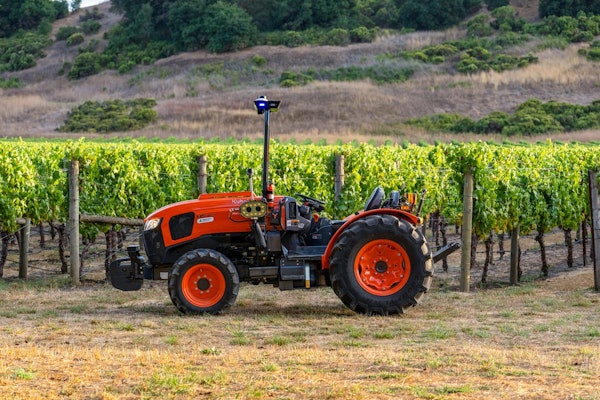
While every company hopes there won’t be accidents that occur in the workplace, the reality is that that’s just not likely. Regardless of what task you or your employees are performing, accidents can and will happen.
Safeopedia says that one of the most critical steps you can take to help reduce both the severity and frequency of these accidents is to take time to investigate the accidents thoroughly to identify what factors caused the accident. This will also help you know how you can prevent similar issues in the future.
According to Safeopedia, along with keeping employees safe and productive, accidents in the workplace should be investigated to fulfill legal requirements, determine costs incurred because of the accident, determine compliance with applicable safety regulations and process worker compensation claims.
Companies can sometimes mistake an incident for an accident, which can cause an improper investigation. Safeopedia defines the word accident as “the final event of an unplanned process that results in injury or illness to an employee,” and “in some cases, it might cause property damage instead or in addition to harm to an employee.”
Incidents are events that are unexpected that have the potential to cause injury, property damage or illness; while incidents can include accidents, they also include events that are unplanned that result in no harm, also known as “near misses.”
Take a look at tips you can keep in mind when investigating accidents in your landscaping company.
Act quickly and report the accident
If an accident occurs in the workplace, it’s important to act swiftly when getting to the bottom of it, and Safeopedia recommends creating an accident investigation team that can further look into the issue and begin addressing the situation.
Safeopedia recommends your accident investigation team include the following individuals:
- Immediate supervisors
- Employees with knowledge of the work
- Safety officers
- Health and safety committee members
- Union representatives, if applicable
- Employees with experience in investigations
- Outside experts
- Representatives from the local government
When an accident is discovered, be sure that either the person directly involved in the accident or the person’s immediate supervisor fills out an accident report.
If the accident is considered serious enough, Safeopedia says it will also need to be reported to the authorities in accordance with statutory laws and regulations.
Accidents such as fatalities, injuries requiring hospitalization, chemical exposure requiring immediate medical treatment and major spills, emissions or any other event that could have serious environmental impact will need to be reported to the authorities.
Care for victims and gather information
Once you’ve discovered an accident has occurred, immediately take stock of whether or not employees will need medical attention or any other type of care.
“Your first responsibility is to ensure that any and all accident victims are taken care of,” Safeopedia says online. “Administer first aid, bring the victim to the hospital or call first responders as needed.”
Once employees are tended to, secure the accident scene and begin gathering as much information as you, or your accident investigation team, can.
According to Safeopedia, two things can potentially change over time after an accident has happened: material evidence and the memories of the witnesses. To ensure you have as much usable and reliable information as possible, examine the scene and talk to witnesses as quickly as possible.
“One of the biggest challenges that investigators face is being able to determine what information is relevant to understanding what happened, how it happened and why it happened,” Safeopedia says online. “It’s a good idea to identify this type of information ahead of time so that you can have a plan or process in place once the investigation is underway.”
Another element to keep in mind when analyzing the facts of an incident is the sequence of events that led up to the accident. Take time to comb through the moments leading up to the time of the accident to try and identify whether or not there were any unsafe behaviors, hazardous conditions or actions that might not have been taken that could have added to the accident.
“Look for system weaknesses as well, such as inadequate or missing safety programs, plans, policies, processes and procedures,” Safeopedia says online. “Once you’ve developed and analyzed the sequence of events, determine the causes of the events by conducting a series of analyses: injury analysis, event analysis, systems analysis, the direct cause of injury, surface cause of the accident, the root cause of the accident and three levels of cause analysis.”
Make a plan and take notes
Once you’ve reported the accident and have conducted a thorough investigation, begin working on a plan your company can implement that will help prevent other issues in the future.
Document the accident in a detailed accident report, as well as every action taken after the accident occurred. When writing up an accident report, be sure to include as much background information as possible to help set the scene, as well as a detailed description of the accident. If there are any significant findings you come across while investigating, note them in your report, as well as your recommendations on how this accident could have been avoided.
Round off the report with a summary of what transpired, any follow-up actions that were performed and finally, attach any photographs, interview notes, videos, etc. that might help explain the situation further.
Safeopedia notes that it’s also important to calculate the costs or even potential costs of an accident or incident and include them in the report. This, Safeopedia notes, can include both direct and indirect costs.
“Keep records and documentation of all accident notification, reporting, investigation and corrective actions,” Safeopedia says online. “Keep these records for at least three years or for the period required by legislation in your jurisdiction.”











